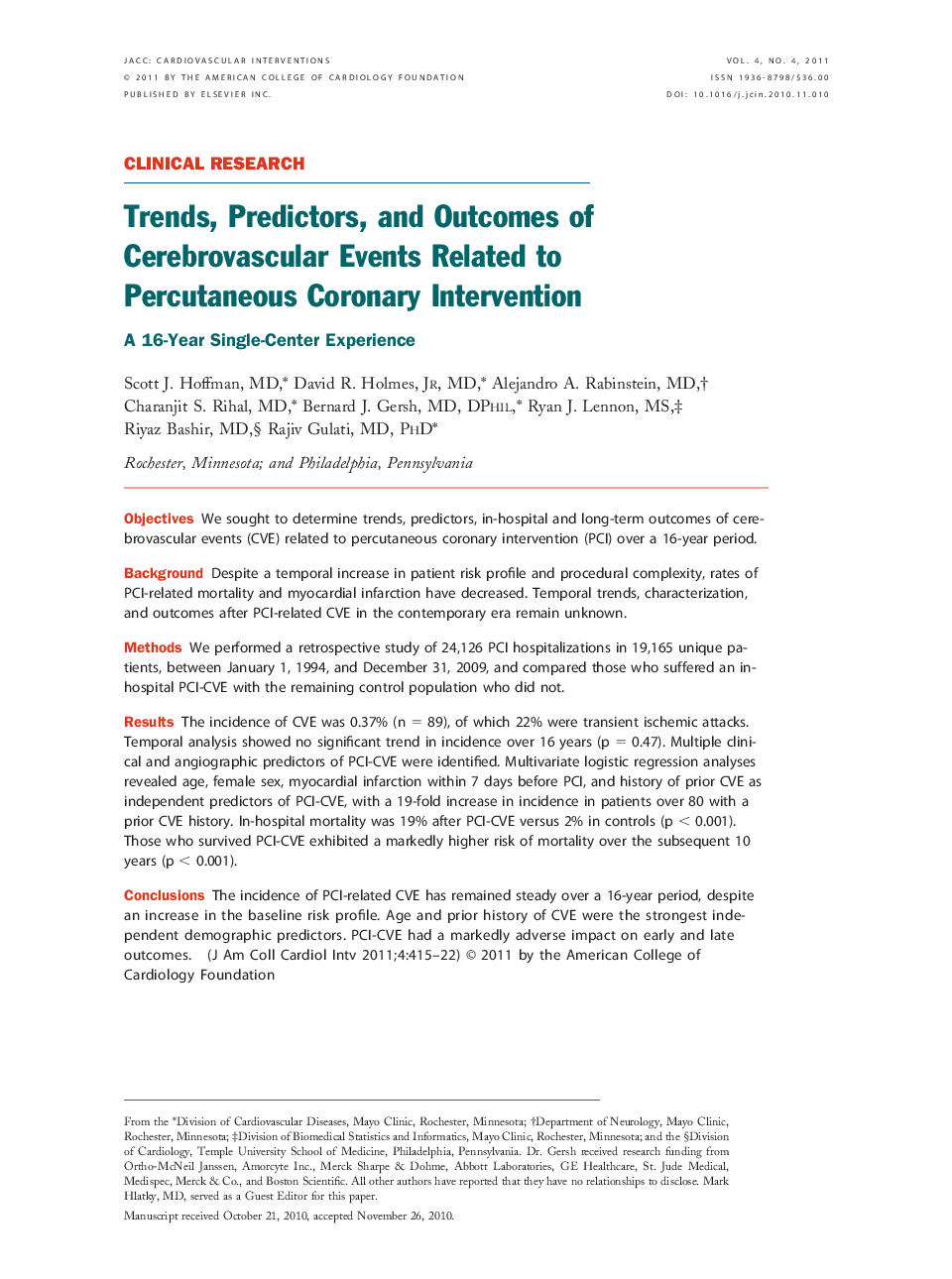| Article ID | Journal | Published Year | Pages | File Type |
|---|---|---|---|---|
| 2941915 | JACC: Cardiovascular Interventions | 2011 | 8 Pages |
ObjectivesWe sought to determine trends, predictors, in-hospital and long-term outcomes of cerebrovascular events (CVE) related to percutaneous coronary intervention (PCI) over a 16-year period.BackgroundDespite a temporal increase in patient risk profile and procedural complexity, rates of PCI-related mortality and myocardial infarction have decreased. Temporal trends, characterization, and outcomes after PCI-related CVE in the contemporary era remain unknown.MethodsWe performed a retrospective study of 24,126 PCI hospitalizations in 19,165 unique patients, between January 1, 1994, and December 31, 2009, and compared those who suffered an in-hospital PCI-CVE with the remaining control population who did not.ResultsThe incidence of CVE was 0.37% (n = 89), of which 22% were transient ischemic attacks. Temporal analysis showed no significant trend in incidence over 16 years (p = 0.47). Multiple clinical and angiographic predictors of PCI-CVE were identified. Multivariate logistic regression analyses revealed age, female sex, myocardial infarction within 7 days before PCI, and history of prior CVE as independent predictors of PCI-CVE, with a 19-fold increase in incidence in patients over 80 with a prior CVE history. In-hospital mortality was 19% after PCI-CVE versus 2% in controls (p < 0.001). Those who survived PCI-CVE exhibited a markedly higher risk of mortality over the subsequent 10 years (p < 0.001).ConclusionsThe incidence of PCI-related CVE has remained steady over a 16-year period, despite an increase in the baseline risk profile. Age and prior history of CVE were the strongest independent demographic predictors. PCI-CVE had a markedly adverse impact on early and late outcomes.
